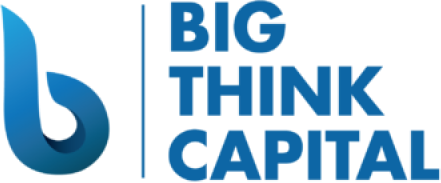Exploring the Impact and Opportunities of the Fed’s Recent Interest Rate Changes for Small Businesses
Estimated reading time: 5 minutes
- Understanding the effects of interest rate changes on small business financing.
- Identifying opportunities in a rising interest rate environment.
- Strategies to navigate the challenges presented by current monetary policies.
- Understanding the Current Landscape
- Why Interest Rates Matter
- The Ripple Effect on Small Business Financing
- Opportunities in a Rising Rate Environment
- Conclusion
Understanding the Current Landscape
The Federal Reserve is tasked with managing monetary policy to foster economic stability. In recent months, the Fed has raised interest rates in response to persistent inflationary pressures. As of early 2025, the federal funds rate is hovering around 5.25-5.50 percent, a notable increase from the previous years. These adjustments aim to cool inflation and stabilize the economy but also bring new challenges and opportunities for small business financing.
Why Interest Rates Matter
Interest rates play a vital role in the economy, affecting the cost of borrowing money. For small businesses, understanding how these rates influence various lending products is essential. Here are some key points to consider:
- Cost of Borrowing: Higher interest rates generally mean higher costs for loans and credit. This can lead to increased monthly payments and impact cash flow.
- Lending Criteria: An environment of rising rates may prompt lenders to tighten their credit criteria, making it more challenging for businesses to qualify for financing.
- Financial Planning: Business owners need to revisit their financial plans and projections. Increased costs of capital might necessitate adjustments in spending, investment, and growth strategies.
The Ripple Effect on Small Business Financing
The Fed’s interest rate changes directly impact various forms of small business financing, including working capital advances, SBA loans, equipment financing, merchant cash advances, and lines of credit. Let’s explore how each of these funding options is influenced by the current interest rate climate.
Working Capital Advances
Working capital advances provide businesses with quick access to cash, which can be crucial for meeting short-term needs. However, with rising interest rates, these advances may come with higher fees and repayment terms, necessitating careful evaluation before proceeding. Business owners should consider:
- Evaluating Cash Flow Needs: Assess how much capital is needed and for how long. This will help determine if a working capital advance is still the right choice.
- Comparing Offers: Different lenders may offer varied terms and fees. Shopping around for the best deal becomes even more critical in a high-rate environment.
SBA Loans
The Small Business Administration (SBA) offers loans designed to support small businesses. While they typically come with lower rates compared to other financing options, the interest rates can still be affected by the broader economic climate. Current SBA loan interest rates range from approximately 6% to 10%, depending on the loan type.
- Fixed vs. Variable Rates: Business owners should consider opting for fixed-rate loans to ensure predictable monthly payments, safeguarding against future rate hikes.
- Long-Term Planning: Given the extended duration of SBA loans, locking in a lower rate now could save significant money over the term of the loan.
Equipment Financing
For businesses looking to invest in new equipment, equipment financing can provide a way to acquire necessary tools without a sizable upfront payment. However, higher interest rates can impact the overall cost of financing equipment purchases.
- Prioritize Essential Purchases: Focus on acquiring equipment that offers the biggest return on investment and improves efficiency.
- Leverage Tax Benefits: Equipment financing can often lead to tax deductions. Evaluating potential tax benefits may help offset higher interest costs.
Merchant Cash Advances
Merchant cash advances provide quick access to funding based on future credit card sales. While these can be helpful, they often carry high fees and interest rates, which are particularly sensitive to interest rate fluctuations.
- Careful Assessment of Repayment Terms: Given their structure, it’s crucial to evaluate the terms of repayment thoroughly and understand how rising interest rates will affect total costs.
- Consider Alternatives: Alternative financing options, such as lines of credit or SBA loans, may offer more favorable terms in today’s environment.
Lines of Credit
Lines of credit offer flexibility, allowing businesses to draw funds as needed. They are particularly appealing during economic uncertainty. However, rates can vary significantly based on the current interest environment.
- Use Responsibly: Managing a line of credit requires discipline. Only draw what you need and maintain awareness of how rising rates will impact your repayments.
- Establish Relationships with Lenders: Building a solid relationship with your lender can facilitate smoother access to credit in challenging times.
Opportunities in a Rising Rate Environment
While rising interest rates present challenges, they also create unique opportunities for businesses. Here are three practical takeaways for business owners:
- Invest in Long-Term Growth: If your business can afford it, consider taking out fixed-rate loans now before rates potentially rise further. This may position your business for growth when economic conditions improve.
- Reevaluate Financial Strategies: Use this period to review your financial policies and debt management strategies. Look for areas where you can improve efficiency and reduce costs to better manage your cash flow.
- Stay Informed and Flexible: Continuous monitoring of interest rate trends and economic indicators will allow you to adapt quickly. Flexibility in your financing approach can lead to better decision-making and capitalizing on opportunities as they arise.
Conclusion
The Federal Reserve’s recent interest rate changes significantly impact small businesses seeking funding. By understanding the nuances of how different financing options are affected, business owners can make informed decisions that align with their growth strategies and financial health.
At Big Think Capital, we are committed to helping small businesses navigate these challenges successfully. Whether you are considering a working capital advance, an SBA loan, equipment financing, or a line of credit, our team is here to guide you through the complexities of small business financing.
If you are interested in exploring your funding options and understanding how we can assist you in achieving your business goals, visit us at bigthinkcapital.com. Our funding experts are ready to work with you to find the best solutions tailored to your unique needs.
FAQ
What are the current interest rates for small business loans?
As of early 2025, interest rates for small business loans range from approximately 6% to 10%, depending on the loan type.
How do rising interest rates impact small businesses?
Rising interest rates can increase borrowing costs, tighten lending criteria, and necessitate adjustments in financial planning and strategies.
What financing options are available for small businesses?
Small businesses can explore various financing options such as working capital advances, SBA loans, equipment financing, merchant cash advances, and lines of credit.
How can small businesses prepare for future interest rate changes?
Businesses can prepare by locking in fixed-rate loans, staying informed about economic trends, and reassessing their financial strategies to improve efficiency.






